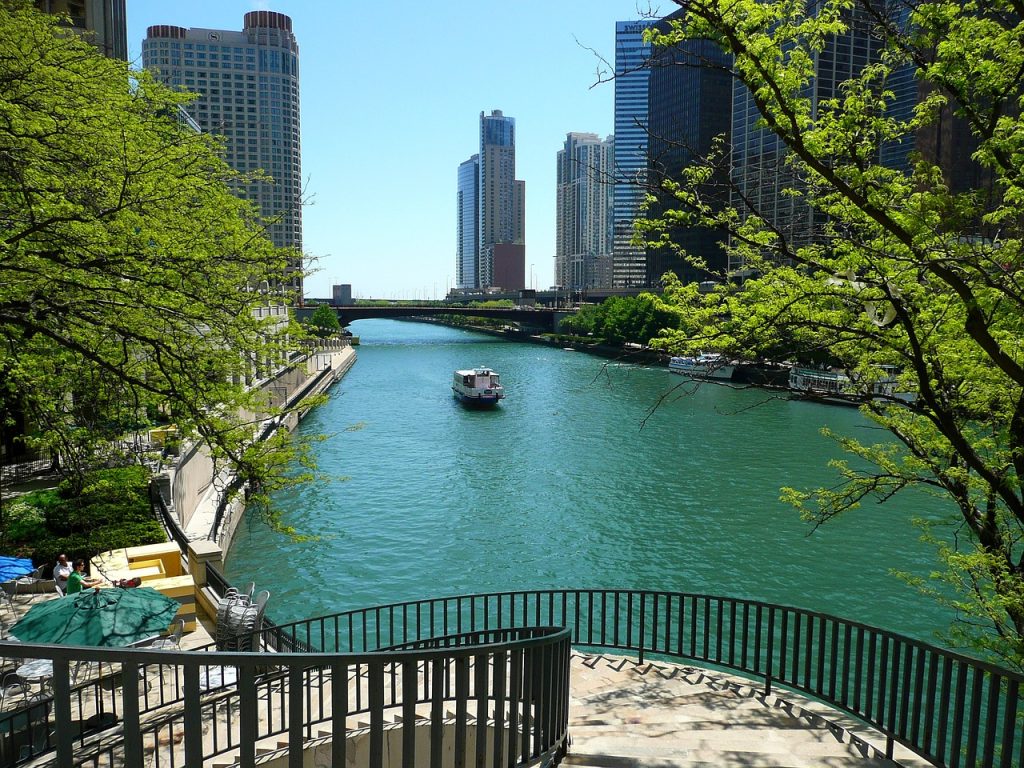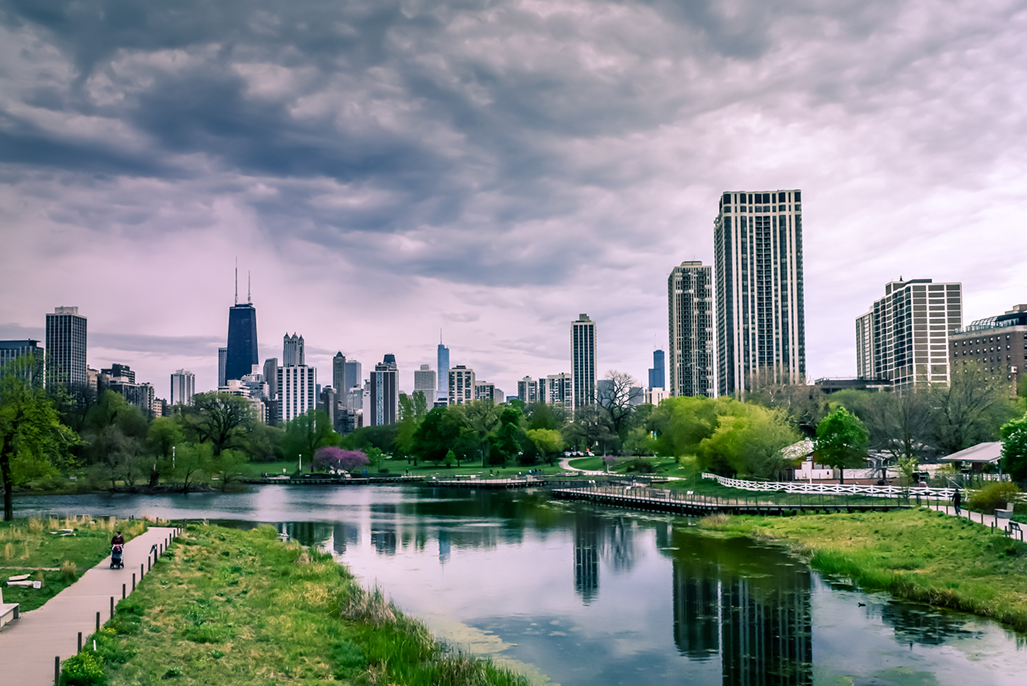Chicago was a leader a century ago in nurturing an urban forest. But those days are in the past, and from 2011 through 2021, there was a net loss of at least 69,000 street trees, according to city records. Tens of thousands of ash trees were removed because of the tree-killing Emerald ash borer. The city’s forestry budget had been slashed, and the planting-specific budget plummeted from $3.5 million in 2008 to $173,500 in 2013. In addition, pine trees have been under attack by pine wilt, which is a serious disease affecting Scots pine and Japanese red pine.
The city also cut down healthy trees for development or to replace pipelines in streets. Chicago’s tree canopy covers only 16 percent of city land according to a survey in 2021, and that figure is 23 percent below the national average. In contrast, nearby Evanston has close to 40 percent tree canopy coverage and has won numerous Tree City awards.

Trees contribute to the environment by providing oxygen, improving air quality, combating climate change, conserving water, preserving soil, and supporting wildlife. During the process of photosynthesis, trees take in carbon dioxide and produce the oxygen we breathe. One acre of forest absorbs six tons of carbon dioxide and puts out four tons of oxygen. This is enough to meet the annual needs of 18 people.
In addition, trees provide housing to millions of species that protect humans from disease. Trees cool the Earth by blocking sunlight and providing shade, and they also protect against floods. Trees can also benefit personal well-being and mental health.
Illinois lost 26.0 kha (hectares) of tree cover from 2001 to 2022, equivalent to a 1.2 percent decrease in tree cover since 2000 (one hectare contains 2.47 acres). Jackson (1.56 kha) and Williamson (1.55) counties experienced the most tree cover loss during that period.
Forest health threats are increasing, with three of the most harmful exotic insects being the Gypsy moth, Asian long-horned beetle, and Emerald ash borer. Exotic invasive plants and pathogens also affect forest health.
Chicago drastically cut back on tree plantings in the late 1990s after destructive pests killed off thousands of trees. The annual plantings plummeted from 17,000 to just a few thousand. A recent pandemic recovery plan enacted by the former mayor of Chicago called for 75,000 trees to be planted in the next five years as part of the ‘Our Roots Chicago’ initiative. This plan would equitably expand Chicago’s tree canopy, planting new trees in every neighborhood.
Embracing Nature is a key element to quality of life
https://reprosenthal.com/2023/09/14/embracing-nature-is-a-key-element-to-quality-of-life/
